2017 Infiniti Q30: First Drive
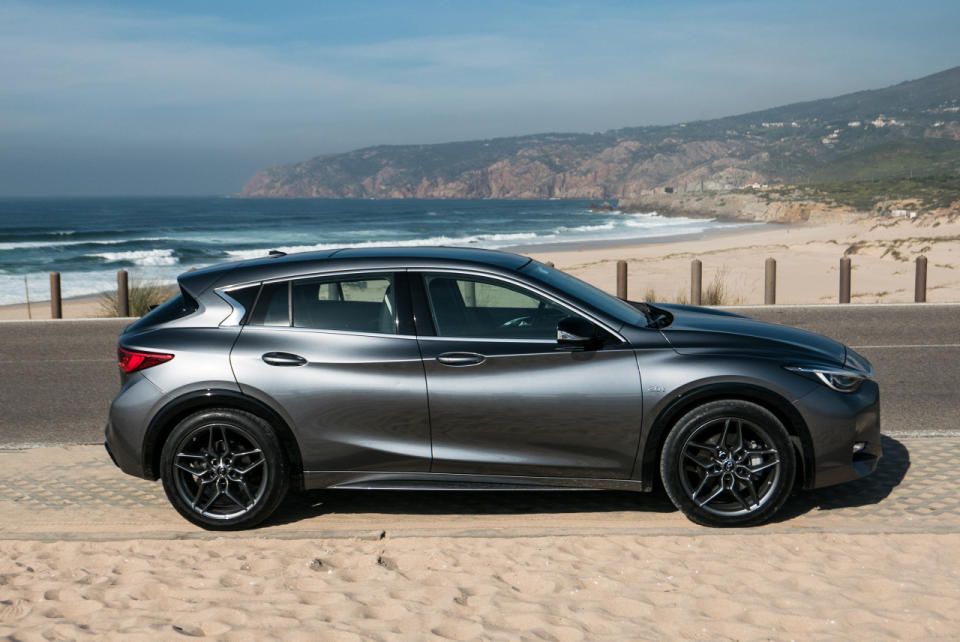
Infiniti brings a not-quite-SUV hatchback to the States with a little–OK, a lot—of Mercedes underneath the wavy sheetmetal.
What it is: 2017 Infiniti Q30
Price Range: To be announced—but according to Infiniti, expect it to “be competitive” with the BMW X1 and Audi Q3.
Alternatives: Mercedes-Benz GLA-Class, Mazda CX-3, Toyota RAV4, Subaru Crosstrek XV
Pros: Edgy, good-looking design, enjoyable to drive, decent space in the rear
Cons: The price, and the lack of an all-wheel-drive version for the U.S.
Would I Buy It With My Own Money: If the sticker’s close to $34,000, honestly, it’s a tough call.
Love Mercedes-Benz but can’t afford one? Drawn to Infiniti’s new design language but don’t love the drive? The 2017 Infiniti Q30 may be just what you need. With the hardware supplied by Mercedes-Benz and the software provided by Infiniti, the 2017 Infiniti Q30 hits a sweet spot that has been hard to scratch for many other automakers. Infiniti calls it an active compact and it occupies the space somewhere between a small SUV and a hatchback, and if it comes in at a reasonable price, it may just be the ultimate alternative to a pricey Benz.
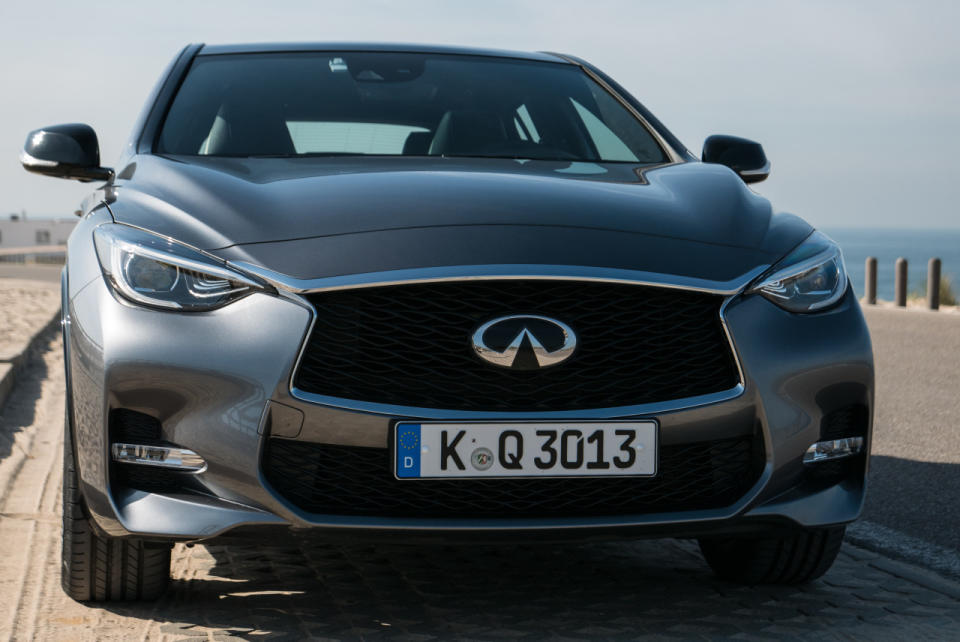
Infiniti’s Q30 is an interesting project. Back in 2010, Daimler AG, the parent company to Mercedes-Benz and Renault-Nissan, the parent company to Infiniti, teamed up in a somewhat common if not unique alliance. Through the alliance Nissan and Mercedes-Benz share an assembly plant in Mexico, the launch and creation of the Infiniti Q30 and the development of a one-ton pickup truck for Mercedes-Benz. Originally the alliance was only going to yield three total projects, but it has since grown to include 13 around the world. This is the alliance’s first truly joint project, and it’s also the first one that U.S. consumers will be able to get up-close and personal with. From our brief time with it in Portugal, the Q30 is a solid play and a really good vehicle.
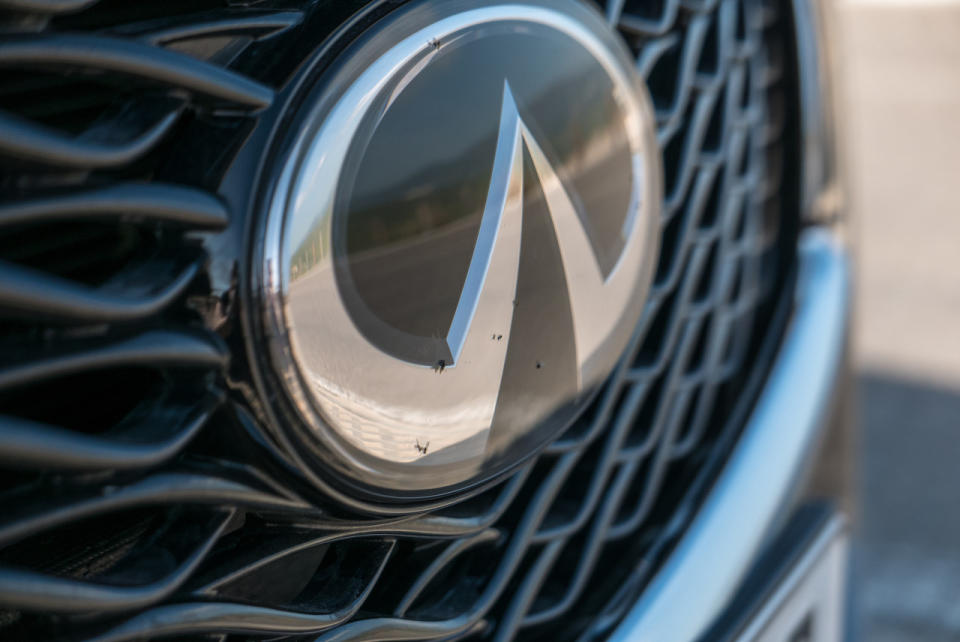
First there’s the striking design. Back in 2013 at the Frankfurt Motor Show we got a first glimpse of the new not-a-hatchback, not-an-SUV vehicle in concept form and it turned heads then. Fast forward to this year’s Frankfurt Motor Show where we got a look at the production version of the car. With the same swooping double-arch grille that we saw on the QX50 we drove back in October, (which is becoming a key design element across the Infiniti brand) a sharp shoulder and hip line and the “crescent cut c-pillar,” the Q30 has a cohesive look that is as aggressive as it is balanced and pleasing. The car-ish SUV walks a line of both bellicose and artful while being young and refined. Infiniti refers to it as an “active, segment-spanning compact” and said they want it to be a global car.
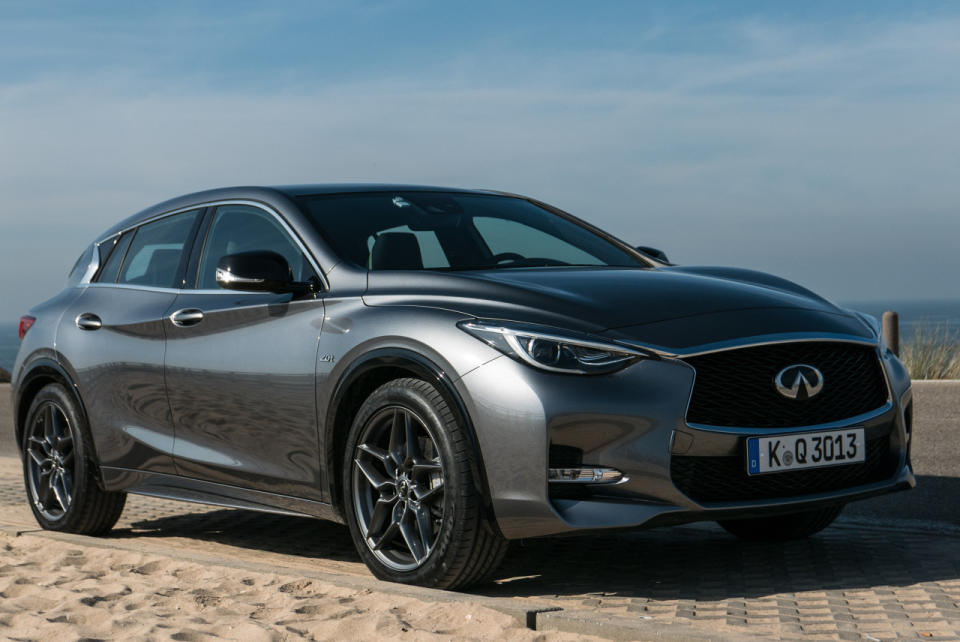
Last week we took a near-production version of the Q30 out on some decent ocean roads along the coast of Portugal. The striking exterior design carries over into the interior in what Infiniti calls its “asymmetrical design.” An unbalanced wave runs across the dash giving the interior a sense of motion and movement. The model we drove had the sport seats which were comfortable, albeit, short on thigh support. In the center of the dash is Infiniti’s own infotainment system that, as we noted on the QX50 drive, is still a bit squirrelly, particularly around Portuguese roads. We had some trouble understanding exactly which roundabout exits it counted and which it didn’t, resulting in a few 360 degree tours. The fit and finish of the Q30S we drove, however, was quite high, and included contrast stitching on the Alcantara dash and leather-wrapped steering wheel. In the back there is ample space for two full-sized adults to sit comfortably without feeling cramped.
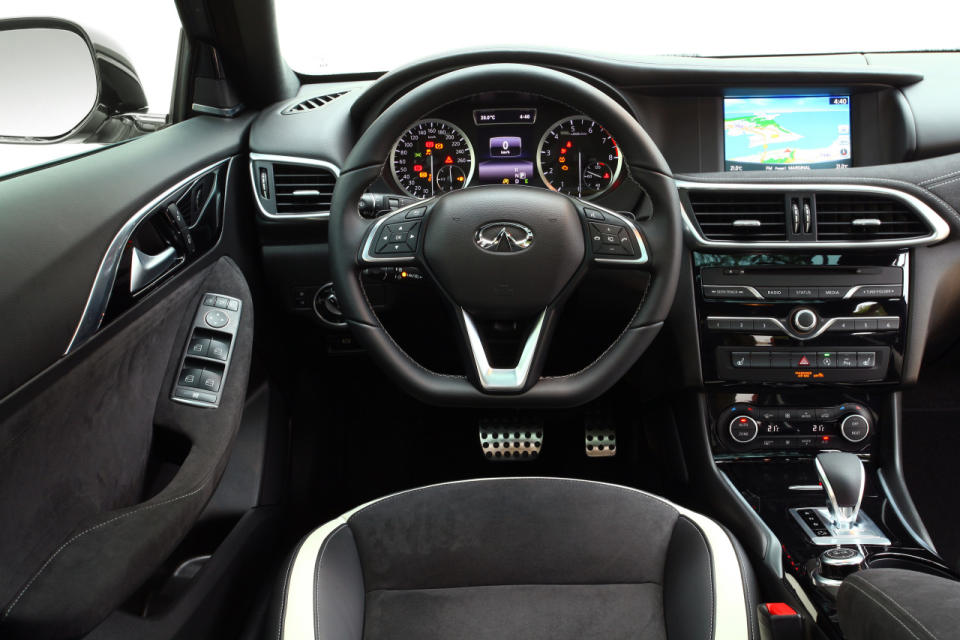
On the road the Q30 was smooth enough to keep passengers happy on twisty roads and just barely fun enough to keep the driver engaged. Change modes from Eco to Sport to Manual and you get a bit more synthetic engine noise in the cabin (yes, it’s piped in through Infiniti’s Active Sound Enhancement system), and a slightly more aggressive throttle map, or you can shift using the paddles attached to the steering wheel. In Manual the gears aren’t held to redline—the computer will automatically kick you up a gear if you are pushing the little car a bit more than it likes, and there is a fairly significant delay between paddle pull and shift. Steering is relatively direct though still comfortable in all modes. Sadly though, steering ratio and suspension tune don’t change as you change drive modes.
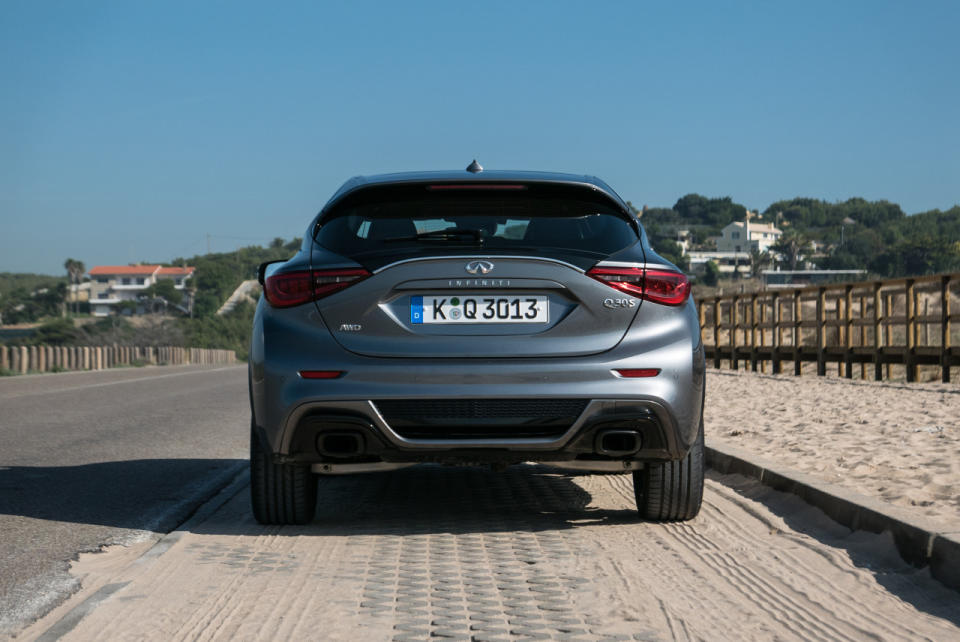
In Europe we drove an all-wheel drive version of the Infiniti Q30 Sport—something we wont see in the states. The new Q30 S we drove is powered by Mercedes’ 2-liter turbocharged four-cylinder engine, and it’s been tuned by Infiniti to make 208 hp and 258 ft. lb. of torque. The engine is mated to a seven-speed dual-clutch transmission, and Infiniti says that the Q30 will do 0-62 mph in 7.2 seconds, in the front-wheel drive version. Sadly, in the states, if you want the all-wheel drive Q30, you’ll have to step up to the QX30 SUV.
Infiniti did a lot of suspension work to keep the Q30 level in corners, including using a multilink system in the rear and MacPherson struts with rebound springs in front. The little car stays relatively planted and flat in sharp turns, but I’m not sure that I’d recommend pushing it hard. While Infiniti says that the suspension tune helps the driver feel connected to the road, there’s a bit of a numb feeling as the suspension works to find a balance between road feel and comfort. The Sport version of the Q30 that we drove is tuned more tightly than the base level will be.
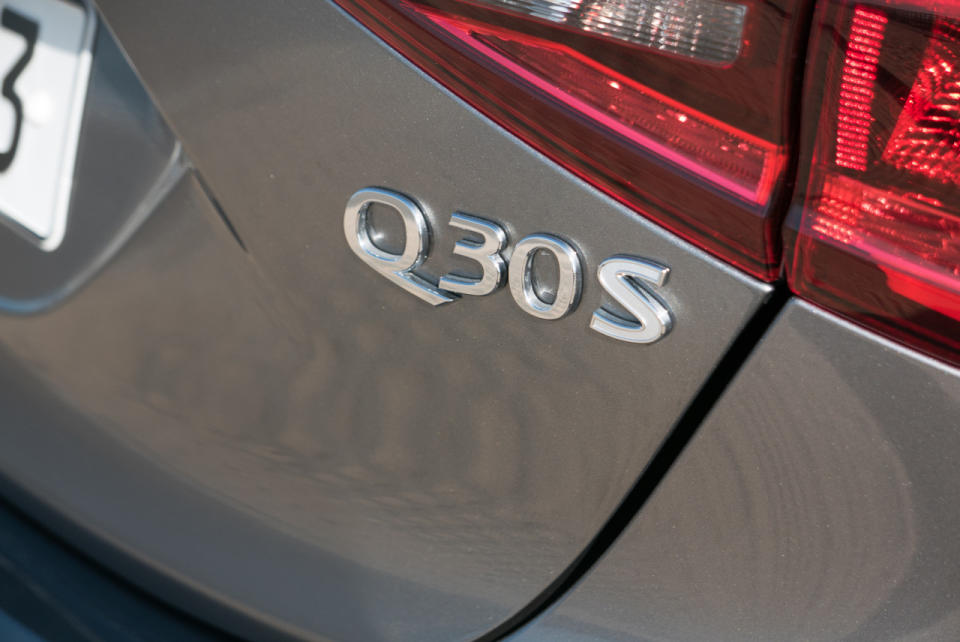
So where are the Mercedes bits and where are the Infiniti parts? It’s complicated. Essentially the actual physical mechanical parts of the new Q30 come from Mercedes-Benz. Much of the chassis and engine are from the Mercedes A-Class, a hatchback model you can’t get in the states. The programming—things like throttle mapping and suspension tune as well as navigation and infotainment—and exterior design were Infiniti’s responsibility.
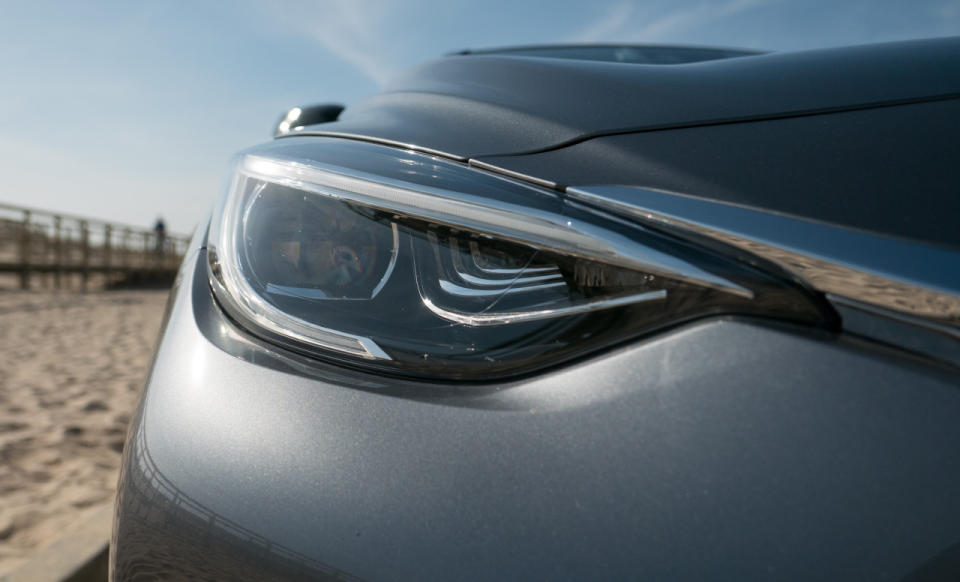
Joint ventures in the auto industry often fail because neither side wants to put forth their best effort under another firm’s name. But Infiniti has pulled off quite a coup with the 2017 Q30, and the only qualm I really have comes down to price.
If Infiniti prices the Q30 in the range that it says it will—to be “competitive with” the BMW X1 and the Audi Q3, then you’re looking at a price tag that starts around $34,000. That’s a high hurdle when you could get into a base-price Mercedes-Benz GLA for $32,000. Infiniti’s suite of technology and safety packages are not nearly as good as those in the Mercedes-Benz, and Infiniti’s looks, while cutting edge, could become dated quickly. Until Infiniti announces pricing, making a go/no-go call on the Q30 is tough. We also won’t see the good-looking car hit American shores until mid-2016. For now, we’ll have to wait and see if Infiniti can scratch that not-quite-a-car, not-quite-an-SUV spot.

 Yahoo Autos
Yahoo Autos 